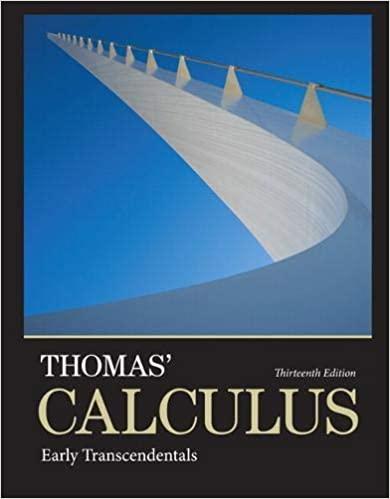Each of the following equations in parts (a)(e) describes the motion of a particle having the same
Question:
Each of the following equations in parts (a)–(e) describes the motion of a particle having the same path, namely the unit circle x2 + y2 = 1. Although the path of each particle in parts (a)–(e) is the same, the behavior, or “dynamics,” of each particle is different. For each particle, answer the following questions.
i) Does the particle have constant speed? If so, what is its constant speed?
ii) Is the particle’s acceleration vector always orthogonal to its velocity vector?
iii) Does the particle move clockwise or counterclockwise around the circle?
iv) Does the particle begin at the point (1, 0)?
a. r(t) = (cos t)i + (sin t)j, t ≥ 0
b. r(t) = cos (2t)i + sin (2t)j, t ≥ 0
c. r(t) = cos (t - π/2)i + sin (t - π/2)j, t ≥ 0
d. r(t) = (cos t)i - (sin t)j, t ≥ 0
e. r(t) = cos (t2)i + sin (t2)j, t ≥ 0
Step by Step Answer:

Thomas Calculus Early Transcendentals
ISBN: 9780321884077
13th Edition
Authors: Joel R Hass, Christopher E Heil, Maurice D Weir





